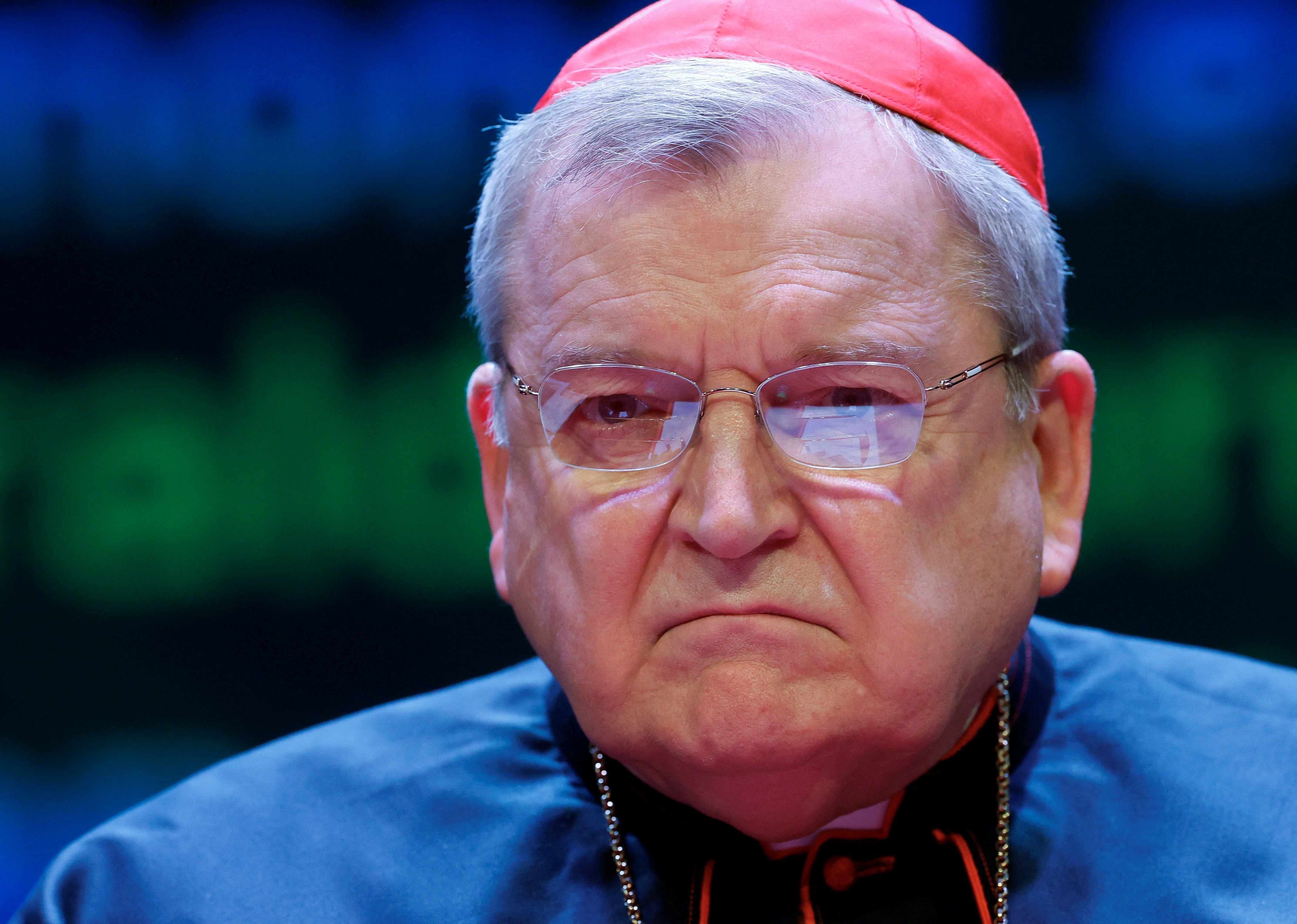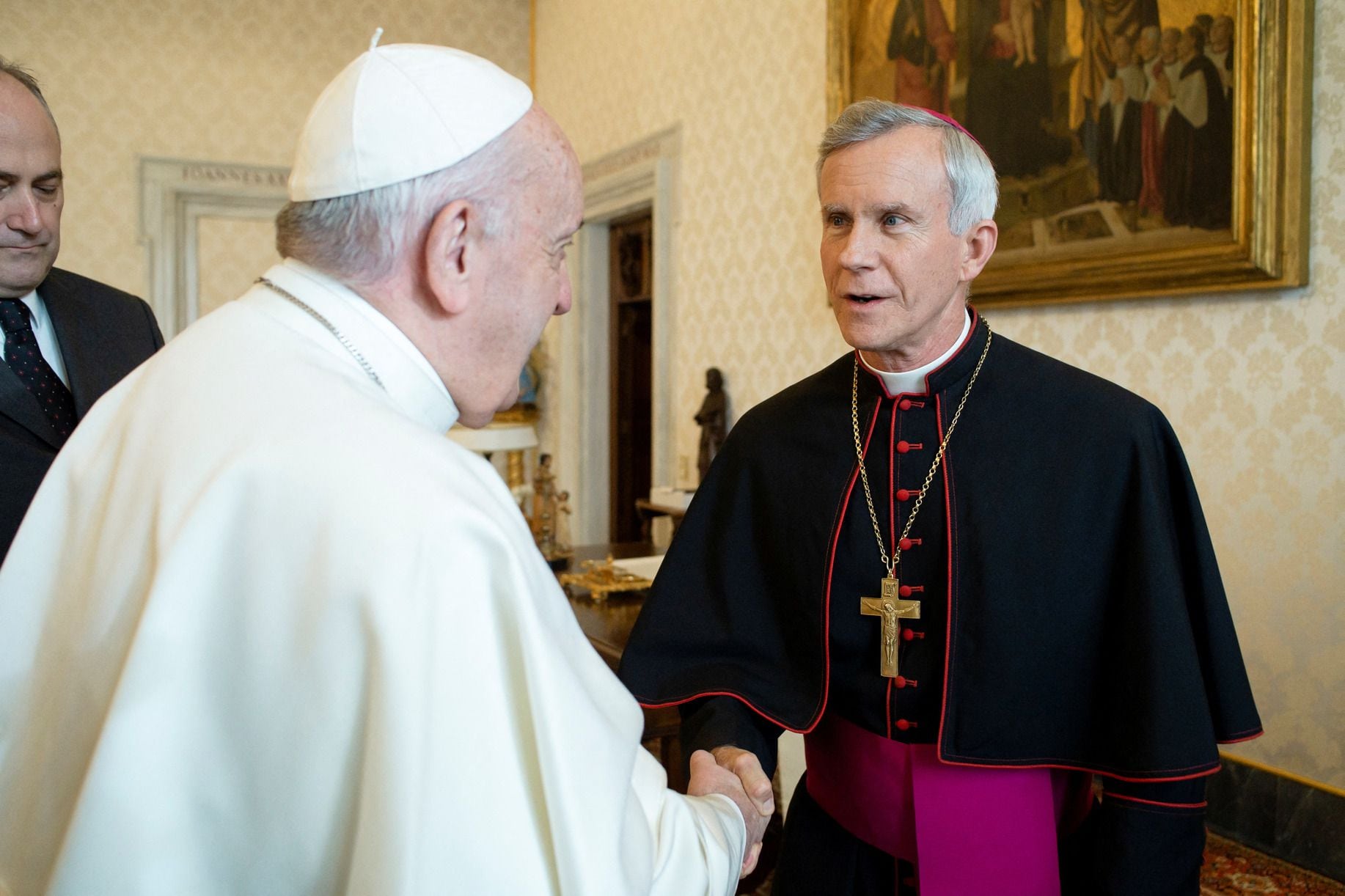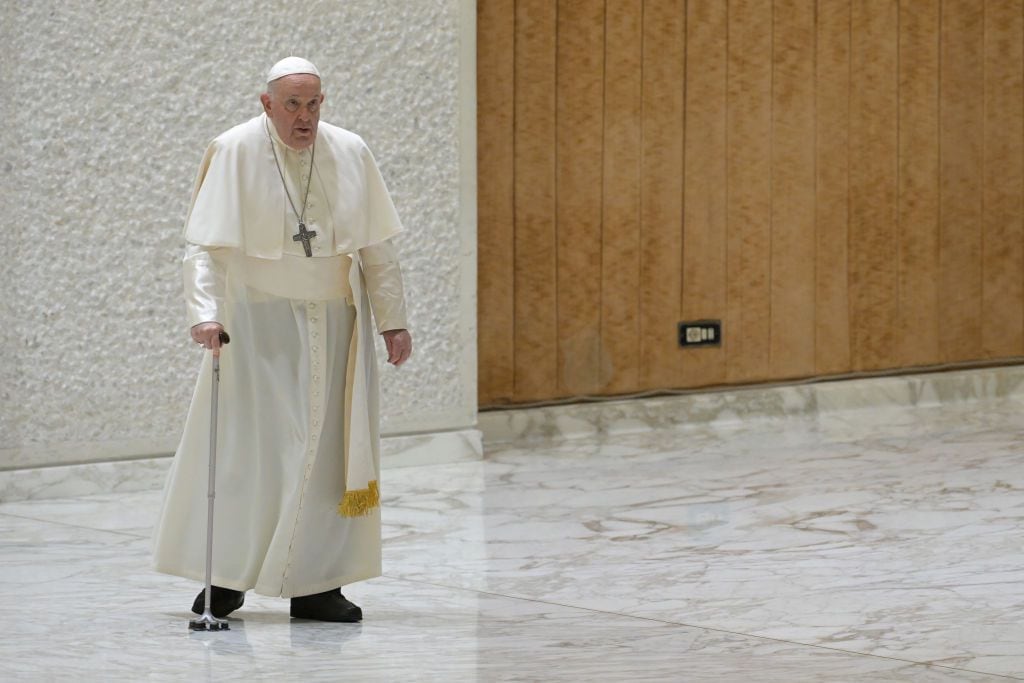:quality(75)/cloudfront-us-east-1.images.arcpublishing.com/elcomercio/5DXHPZHEBRHR3J3G6KW5IKHLMU.jpg)
The tension between Pope Francis and the powerful ultraconservative faction of the Catholic Church in the United States is at peak levels.
The pontiff decided this week to expel the retired American cardinal Raymond Leo Burkeopenly criticizing his management.
WATCH: Pope Francis’ unprecedented decision to expel critic Cardinal Raymond Burke from his Vatican residence
He did so just three weeks after dismissing another fierce critic who opposed his approaches and reforms: Joseph Strickland, who was bishop of Tyler, Texas.
Both actions represent yet another turnaround in the ideological struggle between the Pope, who promotes a more open and inclusive vision of the Catholic Church, and the ultra-conservative sectors of the institution, who are committed to a strict application of their traditional doctrines and ideas.
We analyze what happened and what’s behind it all.
Cardinal Burke
Raymond Burke, an influential figure in the Catholic Church, has openly criticized Pope Francis on several occasions, positioning himself as a central figure in the ultraconservative resistance within the institution.
His vocal opposition to various papal initiatives, especially those advocating progressive reforms, as well as his disagreement with the Pope’s progressive approach to Church doctrine and practice, have been a major source of tension in recent years.

Burke, 75, has openly challenged the Vatican’s approach on issues such as its stance on the LGBTI community – more open during Francis’ papacy – or the role of lay people in Church affairs.
He also participated in ultraconservative Catholic movements that openly dispute the established leadership.
In response, Francis decided to evict him from his Vatican apartment and revoke his salary, an unprecedented measure in the decade of the Argentine papacy.
“Burke was punished after 10 years of harassing Francisco and trying to Position yourself as a higher moral authority than the Pope“, North American theologian and canon lawyer Dawn Goldstein, specialized in the Catholic Church, tells BBC Mundo.
A Vatican source, in turn, explained that the decision was not a personal punishment and was based on the belief that a person should not enjoy cardinal privileges while criticizing the head of the Church.
Bishop Strickland
On November 11, Pope Francis removed Bishop Joseph E. Strickland of the diocese of Tyler, Texas, after he refused to resign following a Vatican investigation.
The investigation, which found irregularities in Strickland’s financial management, concluded that he should not continue in his position.

“No crime was found, just poor management. any other bishop, would not have been deposed” says Goldstein.
For the theologian, the real reason for the bishop’s dismissal was his open opposition to Francis.
“Not only was Strickland mismanaging his diocese, he was also spending an inordinate amount of time on the Internet, asking the faithful to ignore the Pope and accusing the pontiff of undermining the deposit of faithwhich is the faith transmitted by Jesus through the apostles”, he explains.
Goldstein argues that making such an accusation “is actually declare schism in relation to the Pope”.
“And, if he was also a bad administrator, it is perfectly understandable that the Pope wanted Strickland to leave,” he concludes.
Appointed by the late Pope Benedict XVI in 2012, Strickland has launched a series of attacks against the pontiff’s attempts to update the Church’s position on social and inclusion issues, such as abortion, transgender rights and same-sex marriage.
The ecclesiastic has been particularly active on social media, frequently using it as a platform to express his disagreement with the current head of the Vatican.
Precisely this week, the ecclesiastic announced the opening of the your own YouTube channel in which he will predictably try to broaden his views on Catholicism.
Pope Francis
It should be noted that Pope Francis’ disciplinary actions toward Cardinal Burke and Strickland are administrative and not criminal. Neither was charged with a crime.
“But both demonstrated in their own way that they did not act as befits a bishop, that is called to act only in union with the Popenever against him,” says Goldstein.
And he adds that “the ideal response would be repentance and humility on the part of each bishop, for the sake of the unity of the Church under the Pope. But whether or not that actually happens depends on Burke and Strickland.”

In any case, Pope Francis has increasingly openly shown his opposition to the ultraconservative sectors of the Catholic Church.
The pontiff pointed directly to the institution’s hard line in the United States during a meeting with Jesuits at a meeting of young Catholics in Lisbon (Portugal), in August.
“In the United States the situation is not easy: there is a very strong reactionary attitude. It’s organized and shapes people’s belonging, even emotionally,” he said.
“You were in the United States and you say you felt a closed atmosphere. Yes, this climate can be experienced in some situations”, he told those present.
And he stated that when “ideology replaces faith, belonging to a sector of the Church replaces belonging to the Church”.
The Pope invited his critics to understand that “there is an adequate evolution in the understanding of questions of faith and morals” and that It is “useless” to look back.
As an example, he claimed that centuries ago some pontiffs were tolerant of slavery.
These types of comments fueled, among the Church’s ultraconservatives, a deep distrust – if not open opposition – towards its leadership.
US hardliners
Both the cardinal and the bishop the Pope disciplined are aligned with the increasingly powerful hard-line sector within the Catholic Church in the United States.
In this country of more than 330 million inhabitants, Catholics represent approximately 20% of the population and, according to studies, there is a certain balance between the number of believers with progressive positions and those who defend conservative ideas.
The American ecclesiastical hierarchy is made up of 434 active and retired bishops, including 16 cardinals.
And, increasingly, the high command of the Catholic Church in the country adheres to the hard line, defending traditional doctrines of the institution in the face of attempts to reform the liturgy and morality of the Vatican under the leadership of the Argentine Pope.
“I don’t know if those who oppose Francis are the majority, but they have more power and have controlled the United States Conference of Catholic Bishops for years,” says Dawn Goldstein.

These ultraconservatives hold restrictive views on issues such as sexuality, same-sex marriage, birth control and abortion.
And, although they traditionally support papal authority, for years they have raised their criticisms of the head of the Church for approaches they consider too liberal, especially with regard to inclusion and adaptation to contemporary social realities, such as the treatment of the LGTBI community.
They also differ from Francis on issues such as climate change, immigration, social justice, gun control and the death penalty.
Goldstein explains that it is a very powerful group, with support in the business world and which controls a vast media network in which he expands his ideas and his criticisms of the Pope.
“They have been working for many years, especially in the United States, so that their media are the speakers of Catholics and so that their narrative is the authorized narrative”, says the theologian.
He argues that, among other issues, the always controversial issue of abortion played a key role in the radicalization of American Catholic elites.
Although the Catholic Church as a whole declares itself “pro-life” or anti-abortion, the ideological position in favor of women’s right to choose has been consolidated in the American Democratic Party.
This, according to Goldstein, allowed the conservative Republican Party positions itself as defender of Catholics and establish itself, with the support of ultraconservative bishops, as the Church’s main political ally, encouraging both institutions to align their ideological and moral positions.
Source: Elcomercio
I am Jack Morton and I work in 24 News Recorder. I mostly cover world news and I have also authored 24 news recorder. I find this work highly interesting and it allows me to keep up with current events happening around the world.






